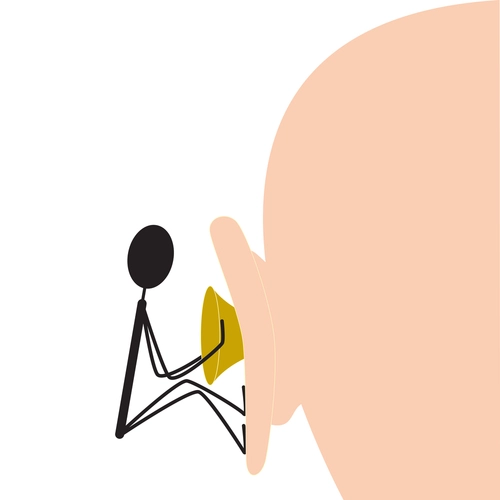Internal Medicine Coding Alert
Know the Bilateral Clause With 69210 For Cerumen Removal Cases

Hint: Check payer preference prior to using modifier 50.
You might have noted that CPT® 2014 brought in a revision to the descriptor for 69210 (Removal impacted cerumen requiring instrumentation, unilateral) to specify “unilateral.” However, implementing the change has come with some challenges.
The expectation: The “unilateral” detail meant providers could append modifier 50 (Bilateral procedure) when removing impacted cerumen from both the ears of a patient during a single encounter, as seen in the parenthetical CPT® coding note stating, “For bilateral procedure, report 69210 with modifier 50.” The American Academy of Otolaryngology/Head and Neck Surgery (AAO-HNS) updated its policy for 69210 to reflect the change (see http://www.entnet.org/Practice/Revised-Coding-for-Cerumen-Removal.cfm).
The reality: Now that practices are filing claims with this approach, however, some providers aren’t getting the reimbursement they expect. Read on for details on the situation and how you should handle it.
Understand the CMS Stance on 69210
“One of my physicians showed me a document from CMS through the RUC (Relative Value Scale Update Committee) that states CMS overturned 69210 to be billed bilaterally and that they will not reimburse bilaterally,” says Candace Ruffing, CPC, CPB, CENTC, of South Coast Ear, Nose and Throat and a member of the AAPCCA Board of Directors.
After receiving this information, Ruffing discovered the following information on the CMS Fee Schedule for 69210:
69210 payment indicator 2:
2 -- 150 percent payment adjustment for bilateral procedure does not apply. RVUs are already based on the procedure being performed as a bilateral procedure. If procedure is reported with modifier -50 or is reported twice on the same day by any other means (e.g., with RT and LT modifiers with a 2 in the units field), contractors base payment for both sides on the lower of (a) the total actual charges by the physician for both sides or (b) 100 percent of the fee schedule amount for a single code.
The non-facility total RVU for 69210 currently is 1.40, with a national non-facility payment of $50.06. This is a decrease from the 2013 non-facility total RVU of 1.56.
The latest news: The AAO-HNS has discussed this issue with CMS, but it hasn’t led to the outcome for which physicians hoped. The AAO-HNS issued a memo on Feb. 5, 2014, stating in part that, “Per CMS instruction on the call, the reimbursement policy will remain in place through CY2014 as an interim value for the service which was finalized in the Final Medicare Physician Fee Schedule (MPFS) for 2014. As a reminder, CMS implemented this payment policy based on their disagreement with the assumption by the RUC that this procedure will be furnished in both ears only 10 percent of the time, as they feel the physiologic processes that create cerumen impaction likely will affect both ears.”
Recommendation: The memo from AAO-HNS continued, “Based on CMS’ guidance, the Academy recommends that members NOT report 69210 using modifier 50, as MACs are denying these claims entirely and not paying for even one unit reported. This requires providers to reprocess the denied claim, which takes additional time and administrative effort.” CMS asked the Academy to share this directive, because CMS will not be issuing a transmittal to providers at this time.
Remember: The Medicare physician fee schedule and this policy only apply to CMS. Other payers should be following the current CPT® definition for 69210 (in effect since 2014), which recommends you report all bilateral services removing impacted cerumen from both ears with instrumentation with modifier 50. Additionally, if the third party payer does not reimburse 69210 as a bilateral code, you can appeal the claim and ask that the payer be held to the HIPAA compliant data set that CPT® represents.
Verify When 69210 Applies
Whether your internal medicine physician removes impacted cerumen from one or both of the patient’s ear, be sure the encounter meets all the criteria before you report 69210.
The AAO-HNS defines cerumen as impacted if any one or more of the following conditions are present:
Plus: Another key factor in determining whether you can legitimately report 69210 lies with the instruments used to remove the impacted ear wax.
The October 2013 CPT® Assistant discussed the 2014 code change in its article “Coding Update: Auditory System (69210).” The article stated, “In this context, instrumentation is defined as the use of an otoscope and other instruments such as wax curettes and wire loops, or an operating microscope and suction plus specific ear instruments (e.g., cup forceps, right angle forceps). Accompanying documentation should indicate the time, effort, and equipment required to provide the service.”
Back-up plan: Removing wax that is not impacted or does not require instrumentation does not warrant the reporting of code 69210. Rather, that work would appropriately be reported with an evaluation and management (E/M) code regardless of how it is removed (such as lavage, irrigation, etc).
Final coding note: Do not include add-on code +69990 (Microsurgical techniques, requiring use of operating microscope [List separately in addition to code for primary procedure]) since the physician is not performing microsurgical techniques. A binocular or operating microscope may be used with removing the impacted cerumen. In this instance, code 92504 (Binocular microscopy [separate diagnostic procedure]) may be reported additionally.
“Remember, if the physician also performs and documents the work of a significant and separately identifiable evaluation and management (E/M) service, you can report an appropriate E/M code in addition to 69210,” notes Kent Moore, senior strategist for physician payment at the American Academy of Family Physicians.
For instance, a patient may present with cold or flu symptoms that prompt the physician to look in the patient’s ears. If the physician detects impacted cerumen, he or she may remove it at the same encounter using instrumentation in addition to addressing the patient’s other symptoms. In that situation, it is likely appropriate to report both an E/M code and 69210. “If doing so, be sure to append modifier 25 to the E/M code. Otherwise, the payer is likely to deny the E/M service, especially since there is a CCI edit that bundles E/M codes into 69210. The modifier indicator on the edit is ‘1,’ which means it can be overridden by an appropriate modifier, such as 25,” Moore adds.
Related Articles
Internal Medicine Coding Alert
- Preventive Services:
Polish Your ECG with Preventive Services Coding with These 2 Scenarios
Hint: Identify level of ECG service performed to nail the right code. When your internal [...] - CPT® Coding Strategies:
Know the Bilateral Clause With 69210 For Cerumen Removal Cases
Hint: Check payer preference prior to using modifier 50. You might have noted that CPT® [...] - ICD-10 Update:
Look Into 4 ICD-10 Code Utilization For Impacted Cerumen
Hint: Check documentation to know if the condition is unilateral or bilateral. If your physician [...] - You Be the Coder:
Include Foot Care Evaluation For LOPS With Other E/M Services
Question: Recently, I tried billing G0245 with an E/M code for a diabetic patient that my [...] - Reader Questions:
Reporting Blister Drainage With an I&D Code
Question: Our clinician recently performed drainage of fluid that was collected in a blister in the [...] - Reader Questions:
Understand if College Physicals Are a Covered Service
Question: Our internal medicine physician performs school and college physicals on a regular basis. I did [...]




